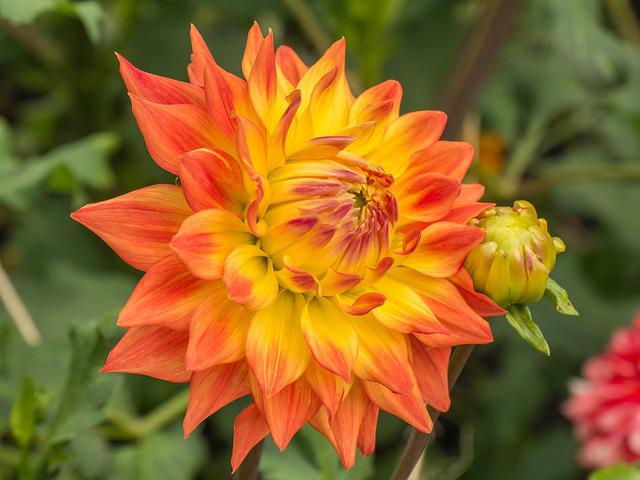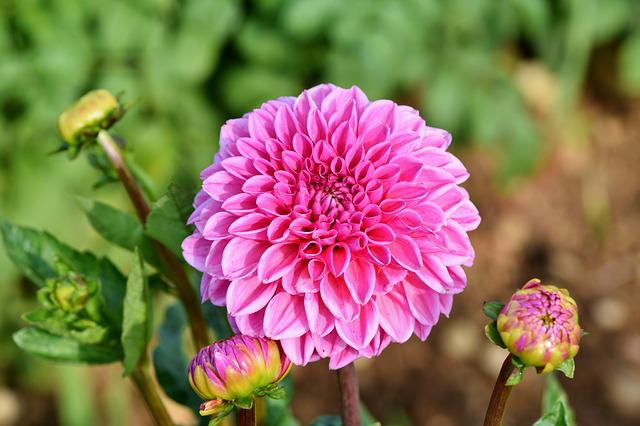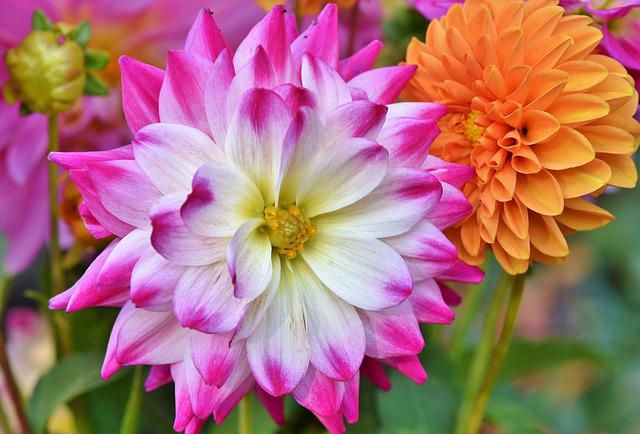Can Dahlias Be Grown Indoors? Indoor Growing Conditions for Potted Dahlia

Keep your dahlia as close to its natural environment as possible if you intend to keep it indoors all year round. Learn how to keep a dahlia happy and healthy indoors by keeping an eye on the temperature, humidity, watering requirements, soil type, and other factors. Most people prefer to grow Dahlias in containers because they are so easy to move around and adjust the amount of light and water the plants receive. Find out here how to grow dahlia indoors. Read on!
Table of Contents
Know When to Plant
The beginning of spring, approximately six to eight weeks before you want to move your indoor dahlias to an outdoor location, is the ideal time to plant them. Blooming will begin earlier on your dahlia plant if you begin it as an indoor plant in a container. Your dahlias’ blooms will not last as long if you wait until after the last expected frost to plant them in the ground or an outdoor decorative pot. You also have the option of planting your dahlias in a container indoors.
Indoor Growing Conditions for Potted Dahlia
Select the Right Pot for Your Dahlia
You must first select the proper pot for your dahlia before you can properly care for it. Dahlias grow from tubers that have formed buds, so the tubers you use for planting should be large enough to accommodate those buds. Depending on the size of the tubers, it’s best to use a pot with a large diameter, like 8 to 12 inches. To avoid the appearance of the plant is too small or too large when fully grown, ensure the depth of the dahlias pot matches the potential height.
Drainage holes should be plentiful in the container you choose to use. Tuber rot is more likely to occur early in the growth process if the soil remains wet. A well-draining potting mix is essential if you don’t have enough drainage holes in your container or none at all.

Fertilizer
Fortunately, dahlias do not require much care; however, they require a well-balanced fertilizer (10-10-10 or 15-15-15), and it is best to only feed them once per year. If you are fertilizing your plant with a fertilizer of a lower strength, you might want to fertilize it twice a year if it appears to need it. Dahlias that lack nutrients typically have leaves that have a yellowing appearance.
Watering
When caring for plants that grow from tubers, you should wait to water the plant until you can see new growth above the potting soil. After that, water the plants approximately twice weekly, waiting until the soil is completely dry before providing additional moisture. You should up the amount of watering you do toward the end of the season when the temperatures are at their hottest because the potting soil will dry out very quickly.
Adult dahlia plants prefer moist soil. Unfortunately, gardeners unfamiliar with dahlias may interpret that as the plant prefers moist soil throughout the year. This misinterpretation can result in losing your cherished plants before they even have the opportunity to produce a single leaf. If the soil does not dry out for an extended period, the tuber, the plant’s primary source of nutrition, will rot.
In the beginning stages of their development, dahlias should not be overwatered. Before you apply any more water, you should give the soil a chance to dry out thoroughly. You can begin your regular watering regimen once the plant has matured and the container has been filled with potting soil.
Pinching
Although it is not required, pinching your dahlia plant at the appropriate time will cause it to become bushier and more robust and will enable it to produce more flowers. When it comes to dahlias, the objective is always to produce more flowers. In a plant with four leaf sets, the tallest shoot will be in the middle of the plant. This needs to be completed without delay. As soon as you can, please get this done. Using scissors, cut off the sprout of the dahlia while being careful not to cut any of the surrounding stalks or leaves.
The plant will respond positively to being pinched by producing more stems laterally. Pinch the tips of new stems to encourage the growth of additional lateral branches. This can be done multiple times if you want the plant to develop more branching. If you want to see your flowers bloom as soon as possible, you should probably skip the pinching step. When the plant’s energy is focused on producing new stems rather than flowers, the production of flowers will suffer for a short period. You might have to wait an extra week to start flowering, but the payoff will increase the number of blooms.

Deadheading
Taking off dead flowers from a plant is called “deadheading.” It is an important part of any flower garden. If you want as many flowers as possible from your dahlia plant, you should remove the spent flowers. By cutting off the flowers past their best, you can keep the plant clean and let it put all its energy into making new flowers instead of trying to keep the old ones alive.
To deadhead your dahlias, carefully cut off any dead flower heads or pull them off with your fingers. Be careful not to hurt any nearby stalks or flowers while you do this. You can also cut the stems back to the main branch to help new stems and flowers grow.
